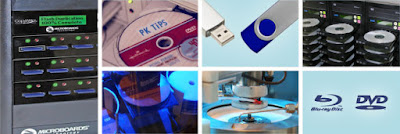Replication and duplication are two methods of copying data and information on a disc. Not just the process of copying is different in both these methods, but the final product is also different. To decide which one is the most cost-effective way for you to copy the data totally depends on the quality and quantity you require.
So, it is important that you must know what the difference between duplication versus replication for CD and DVD is.
The process of duplication
Most of us are already familiar with the process. It is simply burning a blank CD which we all have done many times on our personal computers. Getting it done from a professional is different. At home, you can only burn one CD at a time, but the duplication companies can create hundreds of copies simultaneously.
What are the pros and cons of
duplication?
The process is quick because the set-up time is minimal. If you have the print-ready content, then the duplicator will immediately start copying the data. It works efficiently when you have to print around 5000 units.
However, duplication creates only DVD-R units, which can have only 1 layer of information. As compared to replication, the cost is slightly higher. The output quality is almost similar in both the replication and duplication processes. However, with duplication, you may find a playability issue with the older machines. It is very rare, but some of the equipment which is from the pre-duplication era can find it hard to read all the content.
The process of replication
The method starts at the manufacturing process and is often preferred for producing mass quantities at a relatively lower cost. While replicating, the professionals will create a glass master of your original data and stamp out the content to produce bulk quantities of CDs or DVDs.
What are the pros and cons of replication?
Replication is the preferred method when a large amount of data is copied because it is a very cost-effective process. With this method, you can have DVD-5, DVD-9, DVD-10, and even DVD-18, containing multiple layers of information on either side.
Although the replication process requires the extra step of creating a glass master of your data, so the process becomes lengthy, and the turn time is 10-12 days, whereas you can have your order via duplication in just 8 days.
Conclusion
The result will be a quality product,
so both duplication and replication are useful. So make the final decision
based on the volume of your order and cost-effectiveness. VCM Interactive is
able to produce discs from both processes. Request a quote if you want to know
more about the pricing and packaging details.


